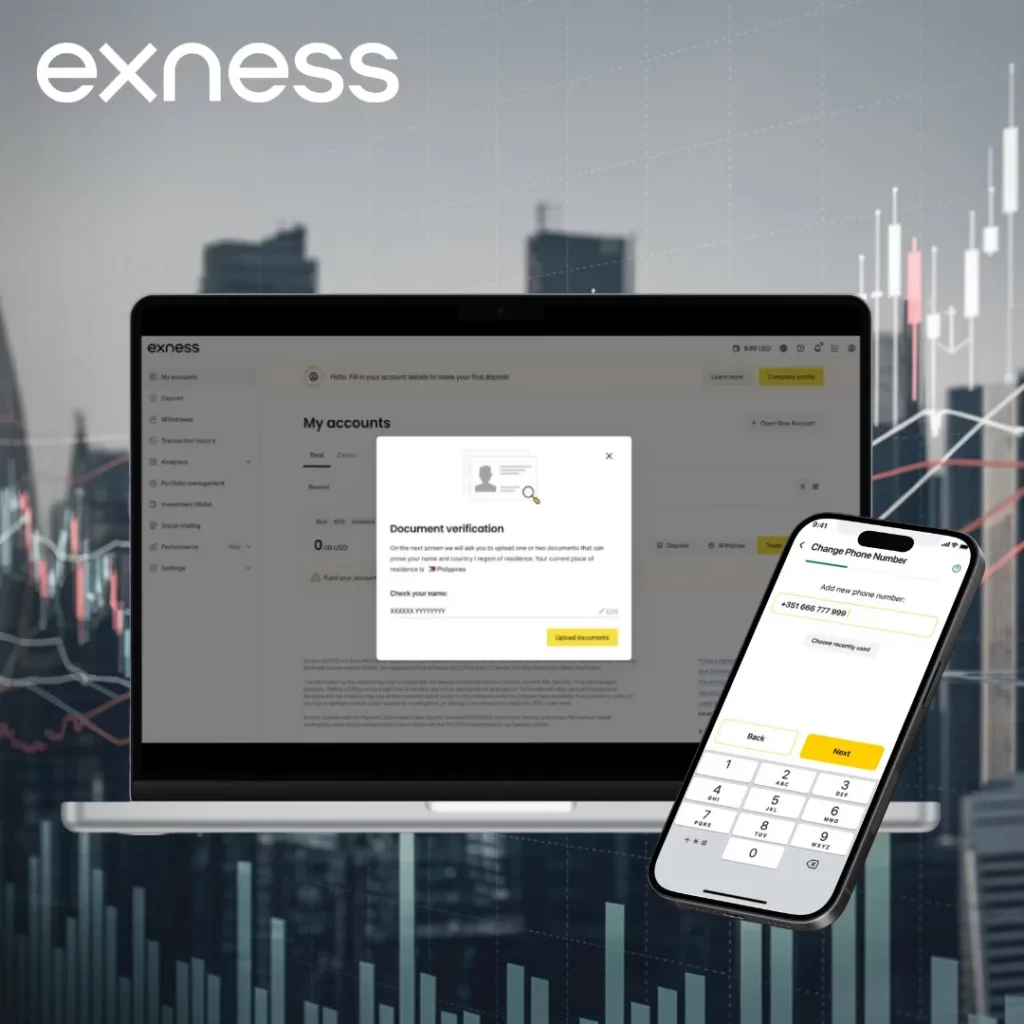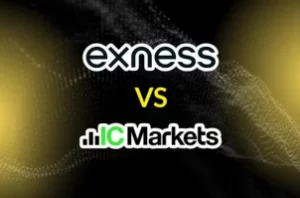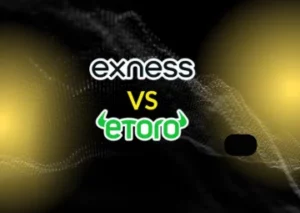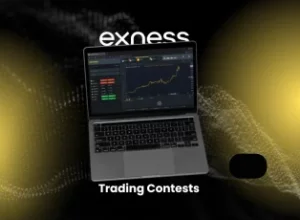Exness Stop Out and Margin Call are crucial risk management tools used by traders to prevent significant losses. A Margin Call occurs when the equity in a trader’s account falls below the required margin level, warning the trader that they need to deposit more funds or reduce their positions to maintain their open trades. If the trader fails to take action, the Stop Out level is triggered, where Exness automatically closes some or all of the open positions to protect the trader from further losses. Understanding these tools is essential for managing risk and ensuring that traders maintain sufficient equity to keep their positions open.
What Is a Margin Call in Exness?
A margin call is a warning from Exness when your account’s equity drops too low compared to the margin required to keep your positions open. It signals that your trades are at risk of being automatically closed if the situation worsens.
How Margin Call Works
When you trade with leverage, you borrow funds to open larger positions. Exness monitors your margin level, calculated as:
Margin Level (%) = (Equity ÷ Used Margin) × 100
If your margin level falls below a specific threshold (e.g., 60% for Standard accounts or 30% for Pro, Raw Spread, and Zero accounts), Exness sends a margin call. This alert warns you to either deposit more funds or close some positions to restore your margin level.
Practical Example
Suppose you have $1,000 in your account and open a position with $500 margin using 1:100 leverage. If the market moves against you, reducing your equity to $300, your margin level is:
($300 ÷ $500) × 100 = 60%
For a Standard account, a margin call triggers at 60%. You’d receive a notification to act—either add funds or close positions to avoid a stop out.
What Is Stop Out in Exness?
Stop out is an automatic safety mechanism where Exness closes your open positions to prevent your account from going into negative balance. This protects both you and the broker from excessive losses.
For most Exness accounts, the stop out level is 0%, meaning positions close when your equity equals your used margin. Kenyan clients under Exness (KE) Limited have a 20% stop out level for earlier intervention, while stock positions during market closures trigger stop out at 100%. When your margin level hits the threshold, Exness automatically closes your least profitable positions until the margin level recovers above the stop out point.
Here’s how it works in practice: if you have $2,000 equity and open a $100,000 position with 1:50 leverage, you need a $2,000 margin. A 1% market drop causes $1,000 loss, leaving $1,000 equity and creating a 50% margin level ($1,000 ÷ $2,000 × 100). If losses continue and equity drops to zero, the margin level hits 0% and triggers stop out. Exness then closes your position automatically to prevent further losses, and their zero-cut system ensures your balance never goes negative, protecting you from owing money beyond your initial deposit.
Margin Call vs. Stop Out: Key Differences
Understanding the distinction between margin call and stop out is critical for managing your trades.
Margin Call
- A warning to act (deposit funds or close positions).
- Triggered at 60% (Standard, Standard Cent) or 30% (Pro, Raw Spread, Zero).
- You can still trade, but new positions may be restricted.
Stop Out
- Automatic closure of positions.
- Triggered at 0% margin level (20% for Exness KE accounts).
- No further action is possible until the margin level improves.
Monitor your margin level in real-time using the Exness platform’s dashboard. Set alerts to stay informed before a margin call escalates to a stop out.
How Leverage Affects Margin Call and Stop Out
High leverage significantly increases the risk of margin calls and stop outs due to amplified exposure. With $100 and 1:500 leverage, you can control a $50,000 position using your entire $100 as margin. However, just a 1% adverse market movement results in a $500 loss, completely wiping out your equity and immediately triggering a stop out. This demonstrates how high leverage can lead to rapid account depletion even with small market fluctuations.
Lower leverage provides much more breathing room for managing market volatility. Using 1:50 leverage with the same $100, you control a $5,000 position requiring $100 margin. A 1% adverse move causes only a $50 loss, leaving $50 equity and maintaining a 50% margin level – well above the stop out threshold. This approach reduces the risk of rapid equity depletion and gives you time to adjust positions or wait for market recovery, making leverage management crucial for long-term trading success.
Exness Stop Out Protection Feature
Exness offers a Stop Out Protection feature to delay or prevent stop outs, but it’s not available for Kenyan clients.
Stop Out Protection temporarily adjusts margin requirements for hedged positions, giving you a buffer before positions are closed. For example, if you have hedged trades, the system may prioritize closing non-hedged positions first, preserving your strategy.
Enable this feature in your account settings if available. It’s particularly useful for traders using hedging strategies to manage risk.
Why Exness Uses a 0% Stop Out Level
Exness sets the stop out level at 0% for most accounts, offering maximum flexibility.
Benefits
- Full Margin Utilization: You can use all available margin without early position closure.
- Trading Freedom: Allows aggressive strategies, especially with high leverage.
- Zero-Cut System: Ensures no debt if losses exceed your balance.
Risks
- Higher Losses: A 0% stop out means you can lose your entire account balance.
- Over-Leveraging: Encourages risky trading without proper risk management.
Practical Advice
Balance flexibility with caution. Use stop-loss orders to limit losses before reaching the stop out level.
Risk Management Strategies to Avoid Margin Call and Stop Out
Effective risk management helps prevent margin calls and stop outs by ensuring you don’t risk more than you can afford. Key strategies include setting stop-loss orders, using proper position sizing, and regularly monitoring margin levels.

- Set Stop-Loss Orders. Stop-loss orders automatically close your position at a predetermined price, limiting potential losses and protecting your account from excessive drawdown.
- Use Proper Position Sizing. Proper position sizing ensures you only risk a small percentage of your account balance per trade, allowing you to withstand multiple losses without depleting your funds.
- Monitor Margin Levels. Regularly check your margin levels on the Exness platform and set custom alerts to stay aware of when they are approaching the margin call threshold.
- Diversify Trades. Spread your risk across different assets or markets (e.g., forex pairs, commodities, indices) to reduce the impact of a loss in any one position.
- Reduce Leverage. By lowering your leverage, you create a larger margin buffer, reducing the risk of a margin call during periods of market volatility.
By placing stop-loss orders, you can limit potential losses, while position sizing ensures that no single trade risks too much of your account. Monitoring your margin level and diversifying trades helps manage risk, and reducing leverage provides a greater safety buffer, especially in volatile markets.
Common Triggers for Margin Call and Stop Out
Market volatility during major news events can rapidly erode equity through sudden price swings, making it essential to check economic calendars before trading. Overtrading by opening too many positions simultaneously reduces free margin and increases margin call risk, while using excessive leverage like 1:2000 leaves minimal room for normal market fluctuations. These factors often combine to create dangerous situations where even small adverse movements can quickly push accounts toward margin calls or stop outs.
How to Respond to a Margin Call
If you receive a margin call, act quickly to protect your account.
Deposit More Funds
Adding funds increases your equity, boosting your margin level. For example, depositing $500 into a $1,000 account with a 30% margin level can prevent a stop out.
Close Positions
Close losing or less critical positions to free up margin. Prioritize trades with the highest losses or lowest potential.
Reduce Trade Size
Lower your position sizes to reduce margin requirements, giving your account more breathing room.
Depositing more funds will help restore your margin level, allowing your trades to remain open. Alternatively, you can close some positions to reduce your margin requirements. It’s crucial to act quickly to avoid automatic liquidation of your positions, which can result in significant losses.
Using Stop-Loss and Take-Profit Orders
Stop-loss and take-profit orders are essential for managing risk and securing profits.
Setting Stop-Loss
Set a stop-loss based on technical analysis (e.g., below a support level) or a fixed percentage of your account. For example, a $1,000 account with a 2% risk limit means a $20 stop-loss per trade.
Setting Take-Profit
Lock in profits by setting take-profit levels at key resistance or support zones. A risk-reward ratio of 1:2 or 1:3 is ideal for balancing risk and reward.
For a $10,000 account, you open a trade with a $100 stop-loss (1% risk) and a $200 take-profit (1:2 ratio). If the trade hits your take-profit, you gain $200; if it hits your stop-loss, you lose $100.
Impact of Account Types on Margin Call and Stop Out
Exness offers different account types, each with specific margin call and stop out levels.
Standard and Standard Cent
- Margin Call: 60%
- Stop Out: 0%
- Best for beginners due to lower risk thresholds.
Pro, Raw Spread, Zero
- Margin Call: 30%
- Stop Out: 0%
- Suited for experienced traders comfortable with tighter margins.
Choose an account type that matches your experience level. Beginners should start with Standard accounts for higher margin call thresholds.
How to Monitor Your Account in Exness
Exness provides tools to track your account’s health.
Platform Dashboard
The Exness dashboard displays real-time margin levels, equity, and free margin. Check it before opening new trades.
Mobile App
Use the Exness mobile app for on-the-go monitoring. Set push notifications for margin level alerts.
Set an alert at 70% margin level on a Standard account to act before the 60% margin call threshold.
Real-World Trading Scenario
Let’s walk through a scenario to illustrate margin call and stop out.
You have a $5,000 Standard account and open a $200,000 position with 1:100 leverage, requiring $2,000 margin. A 0.5% market drop causes a $1,000 loss, reducing equity to $4,000. Your margin level is:
($4,000 ÷ $2,000) × 100 = 200%
No action is needed yet. If losses increase to $4,000, equity drops to $1,000, and the margin level becomes:
($1,000 ÷ $2,000) × 100 = 50%
You receive a margin call at 60%. If losses reach $5,000, equity hits $0, triggering a stop out at 0%.
Benefits of Exness’s Zero-Cut System
Exness’s zero-cut system ensures you never owe money beyond your account balance.
If a market crash causes losses exceeding your equity, Exness resets your balance to zero, eliminating debt risk.
This allows aggressive trading with high leverage, but use it cautiously with proper risk management.
FAQs
What is the difference between a margin call and a stop out in Exness?
A margin call is a warning when your margin level drops to 60% (Standard) or 30% (Pro, Raw Spread, Zero), urging you to add funds or close positions. A stop out occurs at 0% (20% for Exness KE), automatically closing positions to prevent negative balances.



